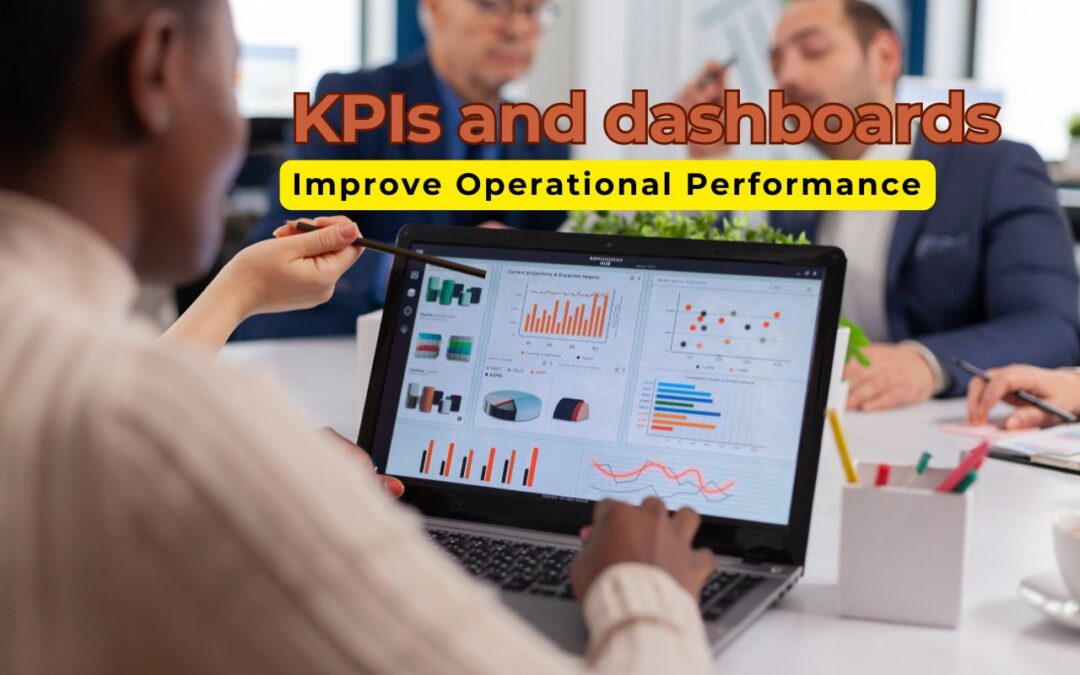In an era where data is considered the new oil, businesses that harness the power of real-time insights are those that thrive. The pressure to reduce costs, improve service quality, and maximize productivity has placed a spotlight on tools that help organizations track, measure, and improve their operations. Chief among these tools are Key Performance Indicators (KPIs) and dashboards. These data visualization solutions have transformed the way businesses monitor their activities and execute strategies.
This comprehensive guide explores how to leverage KPIs and dashboards to achieve superior operational performance, offering practical tips, industry examples, and a detailed implementation roadmap.
What Are KPIs?
Key Performance Indicators (KPIs) are quantifiable measures that reflect the critical success factors of an organization. They serve as a compass, guiding businesses toward achieving their objectives by providing measurable evidence of progress.
Types of KPIs:
- Lagging KPIs: These measure outcomes of past activities. Examples include revenue, customer retention rate, or average order value.
- Leading KPIs: These are predictive and indicate future performance. Examples include sales pipeline volume, employee training hours, and product development timelines.
Characteristics of Effective KPIs:
- Specific: Directly linked to strategic goals.
- Measurable: Quantifiable through data.
- Achievable: Realistic based on available resources.
- Relevant: Aligned with departmental and organizational goals.
- Time-bound: Tracked over a defined time period.
What Are Dashboards?
A dashboard is a visual interface that consolidates data and presents it in a simplified, interactive format. Dashboards are powered by real-time data and display KPIs in charts, graphs, and tables that users can understand at a glance.
Types of Dashboards:
- Operational Dashboards: Monitor day-to-day processes and performance indicators.
- Strategic Dashboards: Focus on long-term objectives and executive-level decision-making.
- Analytical Dashboards: Offer in-depth data analysis, trends, and forecasting capabilities.
Benefits of Dashboards:
- Real-time visibility into operations
- Data democratization across departments
- Faster response to problems
- Improved collaboration and transparency
Why Operational Performance Matters
Operational performance impacts every aspect of a business. Poorly monitored operations lead to inefficiencies, customer dissatisfaction, and financial loss. High-performing operations, on the other hand, boost productivity, improve customer experience, and drive revenue.
Common Operational Metrics:
- Cycle Time
- Cost per Unit
- Machine Utilization
- Inventory Turnover
- On-Time Delivery Rate
- Customer Satisfaction Score (CSAT)
- Employee Productivity
By tracking these KPIs through dashboards, businesses can ensure that every resource, task, and process is aligned with broader goals.
Benefits of Using KPIs and Dashboards Together
1. Real-Time Monitoring
KPIs provide the benchmarks, while dashboards display them in real time. This synergy allows businesses to spot issues before they escalate.
2. Enhanced Decision-Making
Dashboards turn data into visual stories. Executives and managers can interpret patterns, trends, and anomalies easily, enabling quick and informed decisions.
3. Accountability and Transparency
When KPIs are visible to everyone, teams become more accountable. Transparency encourages continuous improvement and aligns efforts across departments.
4. Goal Alignment
KPIs link individual and departmental efforts to strategic goals. Dashboards ensure everyone can track how their performance contributes to the bigger picture.
5. Increased Efficiency
Automated dashboards eliminate manual reporting, reduce human error, and free up time for analysis and strategy.
Implementing a KPI Dashboard Strategy
Step 1: Define Business Objectives
Start by identifying what success looks like for your business. Objectives should be specific and measurable. For example, increasing customer satisfaction, reducing production costs, or improving delivery times.
Step 2: Identify the Right KPIs
Each objective should have associated KPIs. For example:
- Objective: Increase customer satisfaction
- KPIs: CSAT score, Net Promoter Score (NPS), Average Response Time
- Objective: Reduce operating costs
- KPIs: Cost per Unit, Labor Efficiency, Resource Utilization
Step 3: Choose a Dashboard Platform
Select software that integrates with your existing systems (CRM, ERP, etc.). Popular options include:
- Microsoft Power BI
- Tableau
- Google Data Studio
- Klipfolio
- Databox
Step 4: Design User-Friendly Dashboards
A good dashboard should be:
- Intuitive: Easy to navigate and understand
- Customizable: Tailored for different users
- Real-Time: Updates automatically with live data
- Interactive: Allows filtering, drill-downs, and comparisons
Step 5: Train and Engage Employees
Ensure users understand the KPIs and how to interact with dashboards. Conduct workshops and offer ongoing support.
Step 6: Monitor and Evolve
Regularly review the relevance of your KPIs. As business goals evolve, your metrics should too.
Industry-Specific KPI Examples
Manufacturing:
- Downtime Rate
- Overall Equipment Effectiveness (OEE)
- Yield Rate
- Inventory Turnover
Retail:
- Sales per Square Foot
- Average Transaction Value
- Customer Retention Rate
- Inventory Shrinkage
Healthcare:
- Patient Wait Time
- Readmission Rate
- Bed Occupancy Rate
- Staff-to-Patient Ratio
Logistics:
- On-Time Delivery Rate
- Delivery Cost per Mile
- Vehicle Utilization Rate
- Warehouse Accuracy Rate
SaaS:
- Monthly Recurring Revenue (MRR)
- Customer Churn Rate
- Customer Lifetime Value (CLV)
- Daily Active Users (DAU)
Real-World Case Studies
Case Study 1: Manufacturing Company Reduces Downtime
A mid-sized electronics manufacturer was facing frequent production delays. By deploying a dashboard tracking OEE, machine utilization, and maintenance schedules, the company was able to reduce unplanned downtime by 30% in six months.
Case Study 2: Retail Chain Optimizes Inventory
A retail brand implemented dashboards across 100+ stores to monitor inventory turnover and product returns. Managers were able to optimize stock levels, leading to a 15% reduction in overstock and a 10% increase in revenue.
Case Study 3: SaaS Startup Enhances Customer Retention
A SaaS company struggling with churn implemented KPI tracking for onboarding success rate, feature adoption, and support ticket resolution. After acting on the insights, churn dropped by 20% over a quarter.
Common Pitfalls to Avoid
1. Tracking Too Many KPIs
Overloading dashboards with metrics leads to confusion. Focus on the KPIs that truly drive business outcomes.
2. Ignoring Context
Data without context can be misleading. Always compare KPIs against benchmarks, industry standards, or historical performance.
3. Poor Data Quality
Garbage in, garbage out. Ensure that your data sources are accurate and updated regularly.
4. Lack of User Training
Without proper training, employees may misuse or ignore dashboards. Involve them early and provide clear instructions.
5. Not Taking Action
The purpose of dashboards is to inform action. Regular reviews and decision-making processes must follow the insights gained.
Future Trends in KPI Dashboards
1. AI-Powered Analytics
AI and machine learning are making dashboards smarter. Predictive analytics can identify trends before they become problems.
2. Natural Language Processing (NLP)
Voice and text queries will soon replace complex filters, allowing users to ask, “Why did sales drop last week?” and receive visual answers.
3. Mobile Dashboards
With more remote teams, mobile-friendly dashboards are critical. Accessing KPIs on-the-go enhances flexibility and responsiveness.
4. Integration with Business Apps
Future dashboards will integrate seamlessly with apps like Slack, Teams, or Asana, turning insights into action in real time.
Conclusion
Using KPIs and dashboards effectively transforms operational performance from reactive to proactive. By setting the right KPIs, visualizing them through dynamic dashboards, and fostering a data-driven culture, businesses can uncover inefficiencies, optimize processes, and make smarter decisions.
Whether you’re a startup scaling rapidly or an enterprise refining your competitive edge, KPIs and dashboards are the tools you need to stay ahead in a constantly evolving market.
Now is the time to stop flying blind and start managing your operations with clarity and confidence.












